I'm not sure if I ever mentioned that I switched my electronic ignition plans. Did I mention that? Anyway, I sold my Lightspeed ignition box after I got fed up with Klaus's idea of customer service, and bought a P-Mag instead. Based on what you read on the internet, they are either the greatest thing since sliced bread or certain doom. I'm not sure which version is closer to the truth. No product is perfect, but all the same I'm happy with my decision to keep one stone-age magneto for redundancy. Magnetos aren't foolproof either, but at least they have different failure modes, so maybe they won't both break in the same way at the same time (see also the Swiss cheese effect).
Having said all that, if the P-Mag ever so much as looks at me funny I'll replace it with another magneto so fast it'll make the propeller spin. Reliably, I hope, which is the whole point.
For reasons known only to Lycoming, the magneto drive gear is regarded as an engine component, not part of the magneto. So if you're installing a P-Mag on a new engine, you have to track down a gear to use with it. The correct part number is 61163; be prepared to shell out a hundred bucks or so for the privilege.
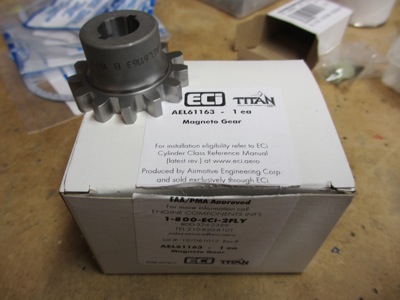
Remember to install the Woodruff key on the drive shaft before attaching the gear:
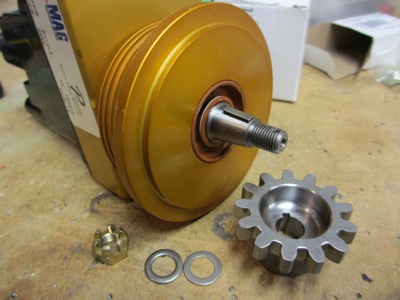
A strap wrench (aka oil filter wrench) is helpful for torquing the nut on the shaft, since there's nothing else to grab hold of and you don't want to squash your expensive gear in a vise. The cotter pin is fun to install – be sure not to leave anything poking out that will catch on the delicate engine-innards and ruin your day.
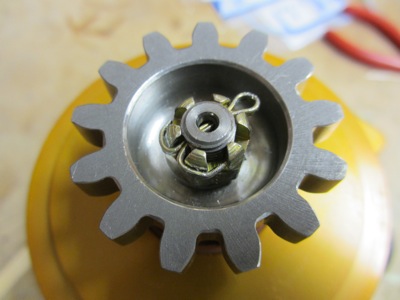
Once again, don't forget the gasket:
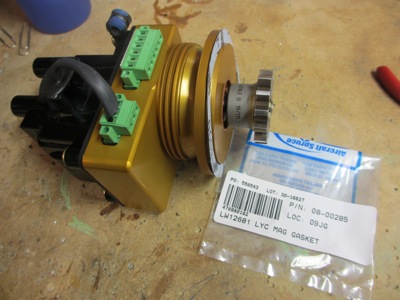
One nice thing about the P-Mag is that, unlike a traditional magneto, it's completely insensitive to mounting orientation. I put it on with the connector pointing outboard for easiest (or at least, least difficult) access. Sharp-eyed readers will notice that the oil pressure hose is disconnected in this photo, of necessity to allow access to the accessory case.
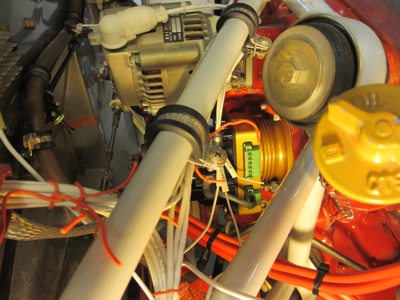
I got a start on running the low-voltage wires to the P-Mag (power, ground, tach, and key switch), but got stalled by lack of a suitable ring terminal to attach the ground wire to an engine case bolt. I'll get to it eventually.
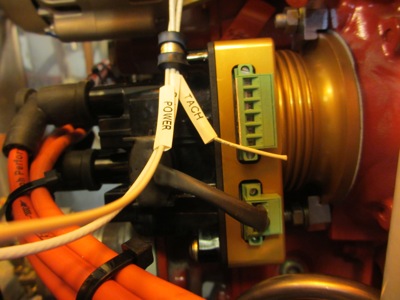
Let me also say something about the electrical connectors they chose to use for these connections. In a word, they stink. In my opinion, this type of screw-terminal connector is acceptable for a piece of laboratory test equipment, but not very well suited to the harsh environment around an airplane engine. I assume they used these because they are cheap and convenient for the designer, if not the installer. I much prefer to have something a lot more robust like a cannon plug used here, and I pointed this out to the P-Mag guys the last time I saw them at an airshow. Their response was to tell me to go pound sand, which I thought was nice. In theory it should still keep running even if all the wires fall off, but then again I have also heard reports of problems happening if or when the ground wire breaks. I will probably end up crimping little ferrules onto the ends of my wires in an attempt to mitigate any future problems, following the lead of this VAF poster.